War plan: strategy and tactics
- Before going to the store, eat a big, very big meal. You can convince yourself as much as you like that the feeling of hunger does not affect your mind, but British scientists know that a hungry person buys 15-20% more than a well-fed person.
- Take bags with you. This is a little thing that will save you the amount you can spend on dinner in a good restaurant over the course of a year.
- Never enter a store without a shopping list. All the marketers and merchandisers in the world are powerless against a buyer with a shopping list.
- Plan your menu. Making a menu shopping list automatically reduces food costs by 20-25% per month.
- Before going to the store, check what products you already have at home: in the refrigerator, in the freezer, on the shelves in the pantry, etc. You may be able to survive the winter with the supplies you already have. Don't buy what you already have.
- Do not take children with you to the store. A child in a store will force you to voluntarily and compulsorily buy him something tasty. For example, if you go to the store 3 times a week and each time you buy something like a kinder surprise for your child (47 rubles), then you spend 7,332 rubles on this “trifle” per year.
- Before going to the store, determine the amount you are willing to spend. Just take it in cash. This way you won’t spend extra money, even if you really want to.
- The less often you go to the store, the less often you will spend money. Create a menu for the week and buy groceries once for the whole week. If you're a Master Yoda of menu planning, plan your menu for the month and buy food in bulk.
Meal planning makes life so much easier and you only buy what you will use. Think about what you need to prepare in advance and check what you already have in your kitchen.
The supermarket trap. How much do you spend on food? Part 2
Share:

July Moscow heat. The back seat of an Uber. Two people are sitting, staring at the screen of one mobile phone.
Me: “Well, how? It’s clear that ELEMENTAREE is cheaper than what you eat now?”
Andrey, somewhat indignantly: “Look, 3,000 rubles a week is 439 rubles a day - how do I know whether this is a little or a lot?”
Me: “What do you mean? You yourself say that you leave any supermarket with a receipt of at least 1000, buying “nothing.”
Andrey, addressing the driver, who was clearly interested in our discussion: “But for you, 3,000 rubles a week for all food is not enough or a lot?”
The driver, almost offended, but willingly joining in the conversation: “I don’t count money for food. I can afford food."
I don’t let up: “Well, still, 3,000 rubles for 4 meals a day for a week - how’s that?”
The driver begins to reason: “If I go to the store, I don’t leave less than a thousand there. But it often happens that you come home, put your shopping in the refrigerator, and there seems to be nothing to eat. The question is, what did you buy? And in a cafe the same thousand is spent on one meal. So 3,000 rubles for a week is very cheap, it doesn’t happen that way. Where do you sell it like that?
I am pleased with the result of the driver’s analysis, but at the same time I understand that he is not fully aware of how much he actually spends on food. I decide to find out how much people in Moscow spend on food and how this budget is distributed.
We estimated all food expenses for the week after the fact so that there would be no temptation to change behavior during the experiment. By the way, people had difficulty remembering exactly what they ate and how much they bought - a clear tendency not to realize the total amount of food expenses. It turned out that we underestimated our food budget by 40-100%. Where are the hidden costs hidden?
- Nervous shopping at a convenience store , especially in the evenings. Many people stop at the store on their way home from work. Even if only a carton of milk is needed, other dairy products or something to accompany the tea are usually added. The check from the expected 50 rubles rises to 500, that is, 10 times. People make such purchases approximately 2-5 times a week, that is, on average, every second day.
- Office pranks . It turned out that the majority cannot live a day without making small purchases of food at the office: cookies, milk, chocolates, and bananas are in the lead. Many consider such pranks to be pure savings, given that some people use them as a substitute for lunch. If you do the math, it turns out that a set of muesli, kefir, cottage cheese and bananas costs 400-500 rubles. It is eaten in one go (the half-eaten muesli is immediately happily gobbled up by colleagues). Thus, some spend up to 2,500 rubles a week on these snacks.
- Snacks on the go . You don’t have time to have lunch, you want to take a break, there can be a lot of reasons, but the result is the same - unplanned meals. The main disadvantage of such food is that it is not properly absorbed by the body, and hunger quickly returns (the calories eaten, unfortunately, do not disappear as quickly). Here, in our surveys, the price tag varied: from 100 rubles for a street pie to 250 to 250 for a croissant from a good bakery. In a week he earns 200-1000 rubles.
- Hungry time in the city . This includes all situations when you don’t seem to be planning to eat in a cafe on purpose, but it just so happens that you are late, you don’t have time, but you still want to eat. Everything is used: from the most affordable fast foods to trendy cafes that turn up along the way. The check is a little predictable, but it is rarely less than 500 rubles, but rather approaches 1,500. It has been noticed that such food does not really bring pleasure, since it is devoured in a hurry, and in new places, it can also be difficult to guess what will be prepared here normally.
- Super or hypermarket. Analysis of purchases for the week revealed two main problems: “extra” purchases and leftovers. The first ones are expressed in unplanned expenses, and then they are often reflected in an increase in expenses. The latter are bad because 30% of purchased food is thrown away because they did not have time to eat it or did not find anything to cook it with. So the initially planned amount approximately doubles.
- Cafes and restaurants as an impression . This is a trip not even for food, but for a comprehensive experience - no one here cares about the receipt at all. But for it to turn out well, you need to go to the right place - and pleasure is guaranteed. Analysis shows that rarely does anyone have such a spiritual experience more than once or twice a week.
It turns out that spending on food awaits us everywhere and is hardly predictable. What if you start managing them? Here are a few ways to do this:
- Calculate your actual expenses on food . Mark the sign by day of the week and write down all your meals there, indicating the location and amount you spent. To create suspense, before you start managing, write down how much you think you spend on food, and argue with your colleagues about the difference between the real and estimated figures.
- Reduce the number of food transactions as much as possible . Move from making a single nutrition decision to a comprehensive decision. Simply put, don’t choose products every time, but calculate your desired budget and understand what fits into it - that’s what you buy. Practice shows that this way you will get more high-quality, natural and healthy food.
- Don't go to the store hungry . If you still find yourself hungry in the store, immediately limit your purchases of “delicious things” to a fixed amount.
- Keep fresh food at home (for example, frozen vegetables and fish), which can be used at any time, thereby saving yourself from an “extra” trip to the store, which leads to the purchase of unnecessary products.
- Always have ready-made food in the refrigerator that is easy to take with you.
- Switch to natural and healthy snacks that are purchased and planned in advance. Carry them with you from home.
- Divide restaurant trips into conditional “I want an experience” and “I want to eat . Replace those that you “want to eat” with food taken from home. For some reason, we have the idea that those who cannot afford a cafe carry food with them. When I lived in America, I became convinced that this was not at all true. Engineers and managers who earn 150K USD per year or more carry food with them to the office. When asked why they do this, they answer that it allows them to know how they eat, control the amount of food they eat, and also manage their time without wasting it on going to a cafe.
- It’s good to plan restaurant trips for the sake of experience , so that this experience will definitely be there.
- Calculate the amount of monthly savings that will come from changing food purchasing habits, and come up with a gift for yourself in advance that you can buy with this money.
- Pamper yourself consciously, only the best and without fuss. Find new flavors and add them to your weekly menu, organize home cooking weekends for loved ones, carefully choose good restaurants.
Finally, some top-level statistics: in Russia, people spend on average 37% of their income on food, and with the advent of the crisis - all 45%. These figures are frightening and bring us closer to the level of development of third world countries. Such countries are characterized by an attitude towards food not only and not so much as a way to obtain energy for life and a form of leisure, but as a currency used everywhere - a gift to colleagues at work, to pamper a child, to feed a man, to take him to a restaurant to show his status, distract yourself from problems and convince yourself that everything is fine. It is very difficult to give up such an emotional relationship with food. But it’s quite easy to solve the nutrition issue effectively and comprehensively in 80% of cases and leave emotionality for the remaining 20%.
So I’ll ask a question: have you already calculated your real expenses on food?
On enemy territory: shopping in a store
- When shopping, use a basket, not a cart. If you plan to buy a lot, then take a small cart rather than a large one. Subconsciously, your brain strives to fill the entire volume of the basket or cart, which means it will treacherously strive to buy more than it needs.
- In the store, don't look in departments you don't need. Even just for fun. Even if there is something shining there
- Washed vegetables are not only more expensive than unwashed ones, but they also store worse. Buy unwashed potatoes, carrots, beets, etc.
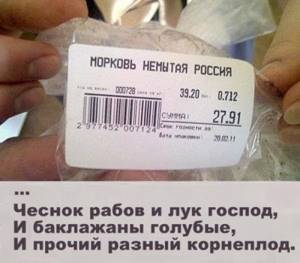
- Do not buy sliced foods (sausage, cheese, bread, etc.), they are more expensive than regular ones.
- Don't buy ready-made salads in the store. Prepare quick five-minute-two-kopeck salads at home: grated carrots with apple, cabbage with carrots, cucumbers with tomatoes, beets with green peas, etc.
- Buy domestic goods. They are often cheaper because the price does not include customs duties, shipping costs and other overhead costs. It's also patriotic.
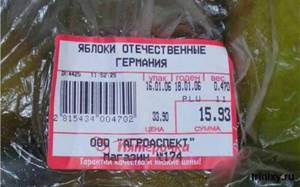
- The most expensive products are placed on the shelf in front of the buyer. The second most expensive ones are on the shelf at hand level. Therefore, you need to start your selection from the lower or upper shelves, where the most inexpensive goods are located.
- Buy seasonal products: in the fall - beets, carrots, cabbage, potatoes, etc. In summer - cucumbers, tomatoes, zucchini, etc. Seasonal products grown on the ground under the sun are not only cheaper, but also healthier than those grown in greenhouses under lamps in a nutrient solution.
- Don't pay for advertising. Products from well-known manufacturers and brands are more expensive than little-known ones. Moreover, the latter are often not inferior to the former in quality.

- Hypermarkets and retail chains often produce products under their own brand, which are cheaper than analogues by eliminating intermediaries between the manufacturer and the store.
- The cheapest time to buy food at markets is on a weekday evening. And the most unfavorable time and the most expensive prices are weekend mornings.
- You can and even need to bargain in the markets. Ask for a discount if you buy a lot. Ask for a discount if you repeatedly buy something from the same seller. Ask for a discount even if you promise to buy regularly from that seller in the future.
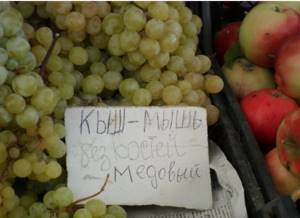
How to spend less money on groceries
How to shop more profitably so that all your money doesn’t go to food? The main rules of family supply will help you spend less money on groceries. Here they are.
• Try to buy seasonal fruits and vegetables . And fewer – expensive foreign and greenhouse ones. Believe me, our cabbage, carrots and other products contain no less vitamins and microelements than exotic fruits, and, by the way, they are absorbed better, because the body is accustomed to them.
• Discard the fillet . And also from packages of chicken thighs and breasts. Do the math for yourself: a whole chicken carcass will cost you much less. In addition, you can prepare soups and main courses from it. Even just for cooking soup, the carcass can be divided into 4-5 times! And if your husband doesn’t have enough meat, buy him salted lard and give him a few extra pieces. )) By the way, as for soups, you can buy a kilogram of minced meat and divide it into meatballs - it’s also economical. That's what I do. But let's get back to the fillet. Fish fillets, by the way, are also more expensive than whole fish, so draw your own conclusions.
• Store greens for future use . Dried or frozen herbs (dill, parsley, etc.) are in no way inferior in value to fresh ones, but purchased out of season at exorbitant prices. Therefore, do not be lazy, and dry and freeze the greens yourself in the fall. By the way, this is what I do - I freeze not only greens, but also berries (in their entirety - raspberries, shadberry, currants, etc.), and vegetables chopped in a blender (beets and carrots), and I freeze cucumbers whole - then in a salad for I rubbed it on a grater, and there you have it, and a wonderful aroma of freshness!
• Cook it yourself . Any semi-finished products (pancakes, salads, cutlets, dumplings, etc.), deli meats and confectionery products are much more expensive than those prepared at home. Besides, you understand, it is unknown what is crammed in there. Recently we ate dumplings, and the minced meat there is more like shredded cardboard - it just doesn’t chew, and the brand is quite popular. What about the pastry chef? What’s not there - chemical additives, flour improvers (!), damn margarine - one of the most dangerous trans fats that our body cannot digest at all. What can I say, almost all confectionery products are prepared with margarine and its analogues. So it’s better to bake treats for the kids yourself, without any E-sheks and other nasty things, and with good butter (you can still find this if you try).
• Buy products in bulk , they are cheaper. But sometimes you can get lucky and more expensive items start selling at a decent discount.
Do you know any other tricks to help you save money on groceries? Please share - it will be interesting to every housewife. ))
If you liked it, share it with your friends))
Cool head, warm heart and calculator in hands
- Go to the store with a calculator. Don't be afraid to seem boring. In the eyes of store employees, you will be a person who knows how to count their money. A very dangerous person
- When choosing a product, first look at its composition, then at the price, and only then at the packaging. Choose not what pleases the eye, but what pleases the calculator.
- Read labels, compare ingredients. The same product with the same composition can be sold under different brands at different prices.
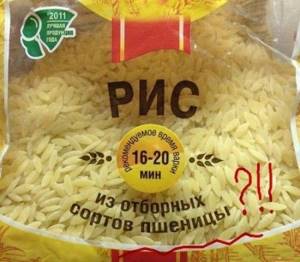
- Read labels, compare weights. There is no point in paying for beautiful and large packaging. It is better to prefer a similar product that is 20% more expensive, but there is 50% more of it.
- Read labels and always check expiration dates. Perhaps the low cost or impressive discount on the product is precisely because the expiration date ends today or tomorrow? Take only those products whose expiration date will allow you to eat them on time.
- Pay attention to weight and displacement. Often a product is cheaper not because it has a truly competitive price, but because it has less volume or weight. For example, a pack of butter is not always 200 g, but often 190 or 180 g. And a carton of milk may not contain a liter, but 900, 930 or 950 ml. It's a small thing, but unpleasant.
- Sometimes it pays to buy in larger packages. For example, a kilogram of flour costs 40 rubles. A 2 kg. The same flour is already 78 rubles. This means that it is more profitable to take 2 kg.
- Sometimes it is more profitable to buy in a small package. This is not a mistake by the sellers, but a conscious calculation that you will automatically take a larger package because you will automatically consider it more profitable. Before purchasing, use the calculator to determine which packaging is more affordable. For example, 5 kg. sugar costs 250 rubles. A 1 kg. sugar - 48 rubles. So, it’s better to take 5 kg. sugar 1 kg. and thereby save 10 rubles.
- Round correctly. 1999 rubles is not a thousand rubles and kopecks. This is two thousand rubles without one kopeck.
- Read the list of ingredients on the labels: they are arranged in descending order of quantity in the total mass of the product. For example, if you take spices, then the first thing on the list should be the spice you are paying for, not salt. Thanks to this approach, you will get the most possible for your money.

How to find food and not die of hunger - TOP recommendations
Today there are many ways to find food, including without money. Let's highlight the main recommendations:
- We study the set of products that are at hand. It is important to look into the drawers and refrigerator to assess the complexity of the situation. You can often find a number of products that are easy to use for cooking.
- We are looking at legal ways to get food. There are many options here for how to eat for free. For example, supermarkets and stores often display product samples that you can try for free. Alternatively, you can come and have a snack at your parents' place. Some restaurants offer promotions for birthday people if you confirm that they have a birthday.
- Let's go to volunteer work. Representatives of such organizations are often given free food, which needs to be taken advantage of. The downside is that you will have to do some work, for example, walking down the street with a box to collect money.
- We use special coupons that are issued at large retail outlets. In this case, you can buy products cheaper or even get food for free. But you need to be careful, because most coupons are a marketing ploy and only save part of the money. In addition, it is important to look at the weight of the product to make sure that the manufacturer has not resorted to trickery.
- We are engaged in farming. The best way to feed yourself is to grow your own food. This option provides food and allows you to earn money by selling food (vegetables, fruits). Over time, you can make a greenhouse and become a successful entrepreneur.
- We shop in cheap stores. Many retail outlets have sales on food that is nearing its expiration date. This is done in order not to throw away food in the future. You can also switch to food that sells at a lower price.
- We drink more water. If good water comes from the tap, you need to increase its consumption. As for expensive drinks, for example, soda, coffee and others, it is better to avoid them.
- We attend events that are paid for by large companies. You can find free food there.
- We go fishing. Since ancient times, people have survived by fishing and hunting. But if the last option is an expensive pleasure, in the case of fishing everything is simpler. An inexpensive fishing rod and worms from the ground (for bait) are enough to feed a family.
- We find places where you can find edible vegetables and fruits for free. This is a convenient way to get enough without spending money.

Don't go to the store on an empty stomach
We often go to supermarkets just for fun, for example when we pass them on the way home after work. But it's not right. We end up buying unnecessary things. Reduce the number of purchases. Go to the store once a week. This will not only save you time, but also money, since you will not be tempted to spend money on unnecessary food.
How much money is needed for food is an eternal question that worries the population. The correct answer is impossible to get if you are the type of person who is prone to impulsive purchases. If you want to sweep everything off the shelves at once, it means that the buyer made a serious mistake before leaving the house - he did not eat.
Decisive battle near the cash register
31. Have you ever wondered why even in a half-empty store there are always queues of at least 2-3 people? It's simple: in front of the cash register there are shelves with various small items: candies, chocolates, napkins, chewing gum. While you are bored in line, your hands reach out for this bright little thing. Or your child will steal it from you (see point 6) Buy goods on the racks in front of the checkout only if they are on your list.
- Before checking out, take another look at what's in your cart. Remove from it what you did not intend to buy.
- Without leaving the cash register, check with your receipt to see if the seller has given you your purchases correctly. Is there any excess there? Are there any goods there that are not at the price indicated on the sales floor? A little trick to prevent such “mistakes” on the part of the seller: when greeting the seller, immediately ask him to punch the receipt for you. This will make him be more attentive, you never know, maybe you are from the tax office with an audit
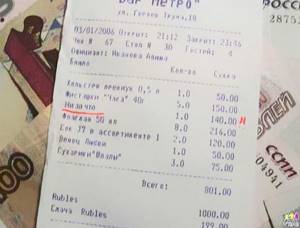
- Pay in cash, not with a bank card. Spending virtual money is much easier than parting with real money.
Promotions and discounts: trap or chance?
It is important to save money on everything, which means learning to pay attention to all kinds of discounts and promotions that can significantly reduce the figure on the final receipt. Be sure to apply for discount cards. Almost all supermarkets offer them. The use of discounts does not exclude payment, of course, but it will be possible to reduce the cost of a unit of goods by a certain percentage, and over time the savings will become noticeable to the buyer.
Pay attention to all kinds of discounts and promotional offers, but be sure to check whether this is really so or just a cunning trick of the market.
How much to spend on food per month in Ukraine in order to feel comfortable and not limit yourself? Not everyone can find a balance between these two tasks. We have to look for ways to save as much as possible on food; money is not always available in the desired quantity. An online loan from the Mycredit microcredit service will help solve an unpleasant problem.
- Visit the official MyCredit website;
- Register in your personal account;
- Specify confidential data;
- Write the phone number and card number to which he would like to receive a loan.
At MyCredit everything is quite simple, fast and loyal.
- Install an application on your phone that allows you to track discounts in nearby stores. For example, Edadil. Or use special sites that collect data on such discounts (enter “catalog of discounts in supermarkets in city N” into Google)
- Before going to the store and even before making a menu and shopping list, look at what promotions are running in the nearest stores. Create your menu and shopping list with this in mind.
- If the store you visit has a discount system, then take the card and use it every time you go shopping at that store.
- Having a discount card is not yet a reason to buy from the store that issued it. Buy only where you really get the best prices for the products you need.
- Do not buy promotions or discounts on products that were not on your list. You don't really need them. And if you need it in the future, then buy it in the future. Promotions and discounts are repeated all the time.

- Keep an eye on prices to be able to determine whether the discounts are real or whether the “discounted” item costs the same as before the promotion.
How to save on groceries. How to spend less on food and not live from hand to mouth?!
Home/Leisure and recreation/How to save on groceries. How to spend less on food and not live from hand to mouth?!
The crisis has not escaped ordinary citizens either. Expenses are rising and incomes are falling, requiring attention to such an issue as saving on the most important expense item - food.

In order to save on food and still eat normally, it is worth considering some nuances:
Drawing up a menu in which shopping is done as little as possible. In this case, we are talking about purchasing only those products that are necessary to prepare a certain number of breakfasts, lunches and dinners.
At the same time, before going to the store, it is necessary to inspect the refrigerator. It may happen that a certain dish requires products that have a short shelf life and are already in the refrigerator.

A spoiled product will most likely have to be thrown away at the end of the week. Oddly enough, but according to statistics, exactly 11% of products are thrown into the garbage chute. At the same time, it is better to shop once a week, so that the next time you go to the store, you will not be tempted to buy something else.
Before going to the store, be sure to check all the promotions that are offered by a particular chain. At the same time, it is important to know that many people prefer to shop at seasonal fairs, when all products are cheaper than in stores.
In addition to the fact that vegetable fairs are held in cities in the fall, they are often held in other seasons, for example, fish kirmash, when the manufacturer offers to purchase fish and other products at almost wholesale prices.
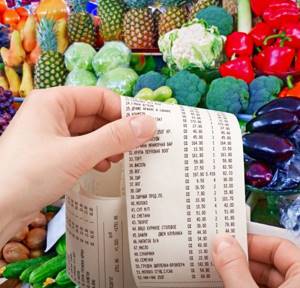
You need to go to the store well-fed. According to psychologists, when you go to a store hungry, there is a chance that you will have to buy more of everything, purely psychologically. At the same time, as the same psychologists say, most of these products will soon go into the trash.
Also, you should pay attention to the lower shelves. According to marketers, it is on the lower shelves that low-cost products are located. Expensive goods are located at eye level. At the same time, the path to common goods lies through those racks where less popular products are located.

And at the checkout, don’t look too much at the shelves. It’s better to look at your phone, because the change that is available at the checkout attracts the eye and the desire to buy something that is not at all required in the usual sense.
You need to eat according to the season and at the same time purchase a whole chicken. It is worth understanding that tomatoes or cucumbers, as well as greens, cost an order of magnitude higher in winter. In addition, there is nothing healthy in these vegetables, so you shouldn’t overpay for these products just for what you want.
Moreover, if you want to eat chicken, it is better to purchase a whole carcass, since it is several times cheaper than purchasing fillets or thighs separately. You can also bake chicken in a flour bag. It turns out tasty and juicy, and there is an opportunity to save on purchasing baking sleeves.

In order not to overpay for products, it is worth paying great attention to such an issue as food storage. It must be organized more than correctly.
Purchased vegetables must be stored not in bags, but in a box in the refrigerator. Vegetables in packaging bags spoil quickly, and if too much is purchased, the likelihood that 50% of the produce will be thrown away is too high.
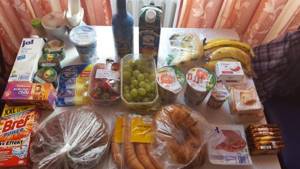
And the most important thing is to remember that a person eats to live, and does not live to eat. You shouldn't spend your entire salary on food.
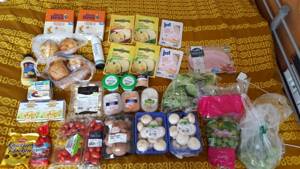
AllaAuthor of the article
Did you like the article?
Share with your friends:
Comments (2)
- Lis March 21, 2020 at 11:58 pm
“You need to eat according to the season and at the same time buy a whole chicken”... This is just a joke
Answer
- Elena January 15, 2020 at 3:18 am
Author, how much is possible? No, I don't throw away food. Yes, I go to the store almost every day, because the same fruits do not store well, I cook from fresh meat and my children love fresh bread. And oh, miracle! I buy exactly what I need, and not everything that catches my eye.
And most normal housewives do this too. And I don’t care what shelf it’s on. If I'm going to buy a particular brand of cheese, that's what I'll buy. From any shelf.
And, if we have already started writing articles, the word “eat” is practically not used in the speech of adults. In any case, it reveals an uneducated person.
Answer
Add a comment
Click to cancel reply.
How to spend less
Too much meat is not at all healthy, but it is also very expensive. If you love meat, try to do without it at least one day a week and increase the interval gradually. You'll see a huge difference in your grocery bill and what's more, you'll feel much healthier. Swap the meat for beans and lentils as they are great alternatives.
The most common reason for unwise spending is lack of control. To determine where exactly the money is flowing, you need to keep daily records of expenses and income. Choose a convenient time, for example evening, write down expenses and receipts of money in a notepad or a special mobile application.
By the end of the first month, you will be able to learn a lot about yourself and your habits. And if necessary, adjust them.
Calculate how much you need to spend each month. An ideal budget is one in which income exceeds expenses by at least 10%.

Set a daily or weekly spending limit for each expense category and stick to it. To combat the temptation to spend more, you can set a daily spending limit on your bank card (this can be set in Internet banking).
There are several ways to get rid of impulsive spending. But for this you will have to complicate shopping trips.
- Go shopping with a list of items and stick to it strictly.
- Carry a limited amount of cash (or a card with a daily limit).
- Set a rule: if you really like “those green shoes,” don’t buy it right away, but the next day, unless you change your mind.
- Ban yourself from spending on convenient but unnecessary things, such as coffee to go, food delivery to your home, and so on.
Periodically (once a month or six months) sort out your wardrobe, bookshelves, and food supplies. Make lists of what you have. Perhaps you will find a vintage dress in your closet that is super relevant today. And in the kitchen you will find stocks of cereals that you forgot about.
Get rid of things you don't use: sell what you can, even for a small amount.
You can earn income from conscious shopping. Every time you stop yourself from making an impulse purchase, put the cost into a savings account.
Set a rule for yourself to wait for sales. In your favorite stores, you can accurately determine whether an item is really being sold at a discount or whether it is a dishonest marketing ploy.
Take advantage of the loyalty programs that almost everyone has now. Don’t forget your discount cards at home (or better yet, add them to a special mobile application). Follow the news: many stores offer promotions that allow you to save big.
A good incentive to start saving is to compare. At a minimum, this will allow you to think about the need for certain expenses.
For many people, shopping is an effective way to lift their spirits. However, this is a bad habit. Bouts of shopaholism lead to unnecessary spending, which can increase stress. You will kick yourself for spending money on unnecessary things. And you won’t be able to get out of the trap “No matter how much you earn, everything is spent.”

What to do? Find non-monetary ways to relieve stress: walks, pleasant communication, sports, music, and so on. Learn to say a firm “no” to “anti-stress” purchases.
how to spend less money on food
The other day I finally picked up a new passport. The one with the fingerprint. The one that allows you to travel to Europe without a visa. We will not go to Europe, we will go to Thailand in the fall (I hope). To apply for a visa to Thailand, the passport must have an “expiration date” of at least 6 months at the time of departure from the country (at the end of the trip). And my old non-biometric one expires in February next year. I still have my old passport. I can drive on it for now too. I have an American visa in it. However, the visa expires in a month. We definitely won’t go to America. With this dollar exchange rate. If 5 years ago we multiplied all American prices by 8 (and then grabbed our heads at how expensive everything was), now we need to multiply by 25! During the three weeks we spent in the United States five years ago, my husband and I spent 10 thousand dollars between us. This includes all flights, food, hotels, souvenirs and a wedding gift (robot vacuum cleaner). In more detail, we flew from Kharkov to Moscow, from Moscow to New York, where we lived for several days in a cool hotel in Manhattan. We ate only in cafes and restaurants, and only once on the day of arrival we ate with friends (they were preparing for our arrival and prepared a lot of delicious things). We traveled around the city mainly by taxi. It's cheap there (of course, compared to the prices of everything else). We didn’t travel outside of Manhattan, so a taxi ride cost 10-15 dollars. A peculiarity of American hotels is that the room rate does not include breakfast. Therefore, we had to have breakfast somewhere. Basically, Starbucks, which is on every corner, is considered a democratic establishment (in terms of prices), even all sorts of homeless people drink coffee there, I saw one long-unwashed grandfather sitting at a table with a cup of coffee and reading a newspaper with a magnifying glass, obviously found by him in a trash heap. Personally, Starbucks prices did not seem affordable to me at all. Most likely due to the exchange rate of the dollar against the hryvnia. Breakfast for two, consisting of two yoghurts, two glasses of cappuccino and two muffins, costs no less than 50 dollars. In both Europe and Asia, breakfast was always included in the price. And we could often have dinner very simply by boiling tea in the room with a boiler and adding cookies and fruit bought in the supermarket to the tea. In the USA, having tea in the room was a big bummer, since the voltage in their network is 110 volts, so I didn’t even take a boiler with me, and there were no kettles in the rooms in any hotel. It was, of course, possible to buy some fruits and yoghurts in the supermarket. But there were no refrigerators or kettles in the rooms. Therefore, there was nowhere to store perishable food. The rooms had a minibar, which we usually use as a refrigerator (after taking out all the contents and organizing our supplies). But in America this number doesn’t work. Their minibar is designed like this: each can of Coca-Cola stands in a certain place, there is a button under the can, as soon as you lift the can from its place, the contact is broken, and a signal goes to the hotel administration that the guy in so-and-so’s room drank coca-cola. cola This cola is automatically added to your hotel bill. Even if you immediately put this jar back, it will be too late. But you won’t be able to not pay, because all hotels require a deposit upon check-in. In general, we still stuffed our food into this minibar, but we did it with the caution of a sapper who is clearing a mine. Because one careless move and you'll end up with 15-20 bucks. That's how much a cola from the minibar costs. All you have to do is shake the jar a little and that’s it...
What else did we spend money on? Flight from New York to San Francisco. And a hotel in SF. A friend, to whom we were going for a wedding, agreed on a discount for us thanks to an acquaintance either with the owner of one of the hotels, or with the administrator. In general, they gave us a discount of $50 per night. The black man who was on duty late in the evening on the day of our arrival did not know anything about this discount, my friend explained to him for a long time and argued, loudly told us in Russian that “blacks are all stupid,” then she called this friend of hers... In general, in In the end, the discount was received. With a fight. But even with the discount, the price per night was approximately $300. Despite the fact that the room was more than modest, breakfast, of course, was not included in the room price. When I read reviews about American hotels before the trip, experienced tourists on the forums warned that it was not worth checking into very cheap hotels, because (for me personally this was a great surprise) bedbugs very often live in such hotels!!!! And, not only does the guest get a sleepless night, he also runs the risk of bringing bedbugs to his home (in his suitcase or on his clothes). I personally naively believed that this type of domestic animal had not existed in the civilized world for a long time! Especially in a country with a first economy! But no! In general, either our hotels were not very cheap, or we were just lucky, but we did not encounter any bedbugs. We only stayed at the San Francisco hotel for three nights, after which we left for a wedding in Davis (we drove in a friends car), and after returning to San Francisco we settled at a friend’s house. We spent one night in Davis. The room was huge, but equally stupid in terms of having a kettle, refrigerator and other amenities. When we lived with a friend, we drank tea with cookies in the mornings and evenings, but still dined somewhere outside the house. Theoretically, we could cook and eat at home, but then we wouldn’t look at the city, but go shopping for groceries, and then cook. So even here it was not possible to save much on food. Anyway. A few days later we flew to Las Vegas. Our hotel there was not the most expensive, but it was the newest in the city. Two girlfriends flew with them, one of them just had a birthday, which we celebrated in Vegas, naturally, in a restaurant. Another interesting point regarding tips. In America, tipping is mandatory. Even in eateries like Starbucks, although you are forced to stand in line, no one puts cups under your nose, you take them yourself, but it is still considered that you are being served. And that you should tip. At the end of the check there are always three lines with three amounts (how much would you like to tip?) Let's say you ate for $70. Under the invoice there will be the following inscription: 5% - 3.5 dollars, 10% - 7 dollars, 15% - 10.5 dollars. It is not customary to leave less than 10%. Usually they leave 15. That's what our friends told us. To be honest, I was pressed by the toad to leave on top of 50 dollars on breakfast another 7.5 for service, which, in fact, is not there. In general, we left sometimes $3, sometimes $5, no more. They'll get by. And without tips, everything is very expensive for them. Naturally, in terms of our money. Yes, actually, why did I dash off all this? Moreover, we are unlikely to go to America in the near future. The visa was open for 5 years, but we never went there again. And I started my story with the fact that you need to get a visa to Thailand. The number of documents that need to be submitted to the Thai embassy is almost more than what we provided to the US embassy. Of course, Taland is a kingdom. And it will be learned proudly, but still…. My husband found out how much he needed to collect and said that he no longer wanted to go to Thailand. They require a passport valid for at least 6 months at the time of departure from Thailand, and at least two blank pages (I wonder why they even need pages?), a certificate of a private entrepreneur (or better yet, two certificates, both husband and wife), with a translation into English, certified by a translation agency, a certificate from the bank (in English) about the movement of money for the last six months, I don’t remember how much should be in the account at the time of receiving a visa, a certificate from the child’s school (I don’t understand why it is needed at all) , maybe they don’t allow those who don’t study at school into the country), you need to provide purchased round-trip plane tickets and hotel reservations. This was not even required at the US Embassy!!! In general, this is something!!! And this despite the fact that we can travel to 34 European countries without a visa, and to Turkey with a Ukrainian passport!!!
As for Europe, of course we can go, but with Europe the situation is the same as with America, even worse. Because their prices need to be multiplied not even by 25, as in America, but by 30! And biots for a plane generally cost a ton of money. I looked up how much three round trip tickets to Milan cost. 20 thousand hryvnia. Is this a normal price? So, until European low-cost airlines come to us, we will not fly to any Europe. It’s a shame that they, with their salaries, can fly for 20-50 euros, and we from here can pay for more than 100. And this is with our income in hryvnia. A 2-3 star hotel in any European capital costs at least 100 euros. The same prices for an apartment in the center. You can, of course, live further from the center, but then you will need to spend money on transport. Yes, and it’s a pity. The longer it takes to get from and to the hotel, the less you have time to see. Here you can rent an apartment for a whole month for the money that it costs one night in Europe. You can go by car, but this option is more suitable for those who live in western Ukraine. They are closer to the border. And we have to cut 15 hours to the border on our terrible roads. Plus you need car insurance. And also pay for the roads. And for parking. In Milan, parking costs 20 euros per day. The center generally pays hourly. The food isn't cheap either. Pizza costs about 15 euros. This is 450 hryvnia. The three of us can't get enough of one pizza, we need to take two and have something to drink. In short, such a modest lunch will cost more than a thousand hryvnia for three. If you buy hot food in a restaurant, a full portion costs 30 euros. In general, the picture is not happy. But, if you really want to, then, of course, you can go. Take some food with you. But dairy and meat products cannot be imported into Europe. Therefore, you can only take cookies, cereal and water. You probably won't last long doing this. Well, in Poland, of course, everything is much cheaper than in Italy. In Poland it’s even cheaper than here. So you can safely go to Poland! Oh, that's it, I'm going to bed! It’s already half past three in the morning!
Code of the penny-pincher
- Add wine vinegar and your favorite spices to the jar, where the mayonnaise remains only on the walls, and shake it well. Makes a salad dressing.
- Pour hot milk over the empty jar of Nutella and shake. Get hot chocolate.
- When oil or sauce bottles run low, turn them upside down to extract as much content as possible.
- Cut the plastic packaging, there is still a lot of tasty stuff on the walls.
- If you have the desire and opportunity, collect and dry/freeze mushrooms and berries yourself.
- Replace tea packaged in bags with loose leaf tea.
- Instead of tea, you can brew herbs. For example, fireweed, thyme, lemon balm, mint, currant and raspberry leaves and shoots, chamomile, linden.
- Try not to throw away food. You can make crackers or croutons from stale bread. From the cooled porridge - cutlets. Pancakes made from sour milk. From cottage cheese with an expiring shelf life - cheesecakes, etc.
- Small pieces of all sorts of things left in the refrigerator make excellent toppings for pizza and pies.
- Leftover fermented milk products can be used in this way.
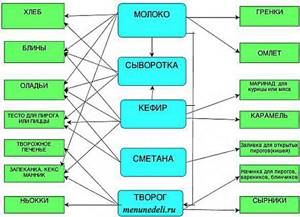
- Tomato juice can be made from tomato paste.
- Homemade kvass is almost 3 times cheaper than store-bought kvass.
- Do not pour out the marinades from cucumbers and tomatoes. They can become the basis for pickles and borscht, and you can stew meat in them.
- The juice remaining after frying meat can become the basis for sauce. For example, tomato and sour cream for cabbage rolls.
- Add finely chopped vegetables with a neutral taste to the minced meat. For example, zucchini, cauliflower, onions. This trick will allow you to cook more cutlets from less meat, while the cutlets (meatballs, meatballs) will turn out more juicy and tasty.
- From shrimp shells you can prepare delicious shrimp oil according to the French recipe.
- Use the water in which the peeled potatoes were boiled to make soup. You can dilute mashed potatoes with the same water instead of milk.
Master of replacement and substitution
- Replace expensive meats with cheaper ones. Instead of beef - pork. Instead of turkey - chicken.
- In winter, instead of expensive “plastic” vegetables, fruits, and herbs, buy frozen, canned or dried ones that were collected and processed in the summer, fully ripe. Their nutritional value is comparable to that of fresh vegetables, fruits and herbs, and they are cheaper.
- How about offal instead of meat? From the liver, heart, stomachs, kidneys, etc. you can prepare many delicious dishes that will be cheaper than meat dishes. For example, heart is no worse than regular meat, but costs half as much. And the heart can make a good goulash, minced meat filling for casseroles, etc. And what a delicious filling for dumplings comes from a light one!
- Instead of expensive varieties of fish (salmon, trout, sea bream, etc.), buy inexpensive ones (hake, blue whiting, pollock, capelin, tilapia).
- Instead of bagged porridge, buy cereal. It's both healthier and cheaper.
- It is not at all necessary to eat meat for breakfast, lunch and dinner. Several days a week, meat can be replaced with other protein-rich and affordable foods: legumes or dairy.
- Save money on store-bought juices made from powdered concentrate. An exception may be tomato, apple and birch juices (in our latitudes they are often bottled in their original form). It is cheaper and healthier to cook compotes from fruits and berries frozen in the summer.
- If you do not live in a seaside city and are not sure that chilled fish splashed happily in the sea (lake) for just a couple of hours, then buy frozen fish. It is cheaper and not inferior in quality to the one thawed in the store and sold under the guise of “chilled”.

- To save money on meat dishes, cook dishes less often from pieces of meat (such as chops), and more often dishes from minced meat, to which you can add a lot of tasty, healthy and inexpensive things.
- Replace large plates with small ones. This simple tip will help you eat less.
What can you do at home?
- Instead of snacks, fast food, and ready-made food, buy quality products and cook at home. This is not only more economical, but also healthier.
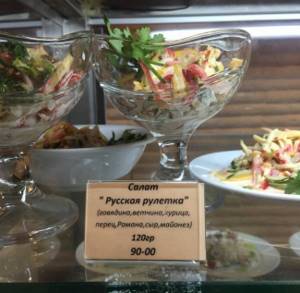
- Yogurts. You can make them yourself in a yogurt maker, in a slow cooker, or even in a regular saucepan.
- Many types of expensive cheeses can also be made at home. For example, Philadelphia, mascarpone.
- If you can buy whole milk, buy and prepare cottage cheese and cottage cheese at home according to this and this recipe.
- Make your own cookies and pies at home. Examples of inexpensive cookies here and here, jam pie here.
- Make homemade seasonings. For example, in the summer you can dry herbs and prepare a delicious dried seasoning like “vegeta”
- Homemade turkey or chicken sausages are even suitable for children's menus.

- Homemade sausages: boiled, liver, finger sausage, chicken, pork, liver, salmon.
- Prepare homemade salted or marinated fish.
And finally: saving is voluntary. Think of it not as a punishment, but as a sport that trains ingenuity, discipline and culinary skills.
What saving methods do you use?











